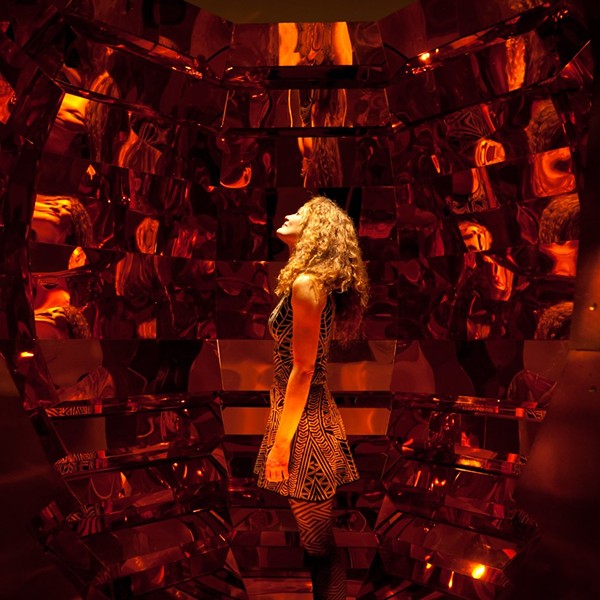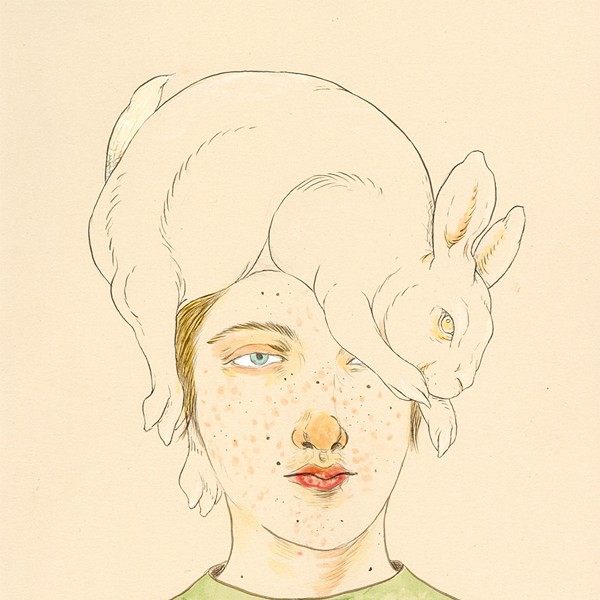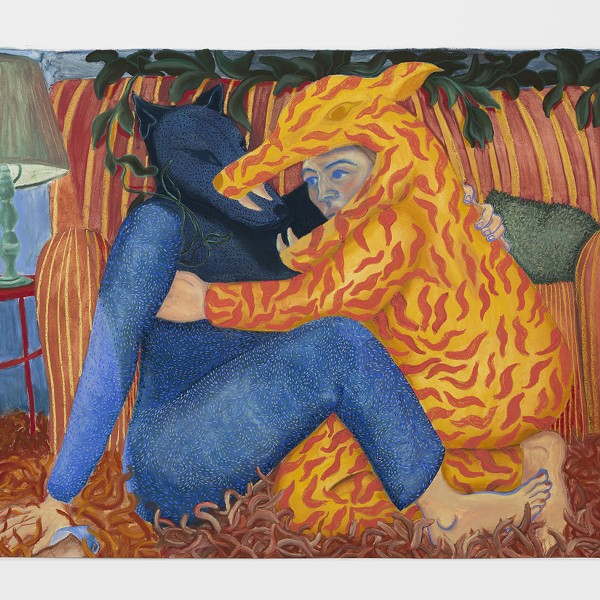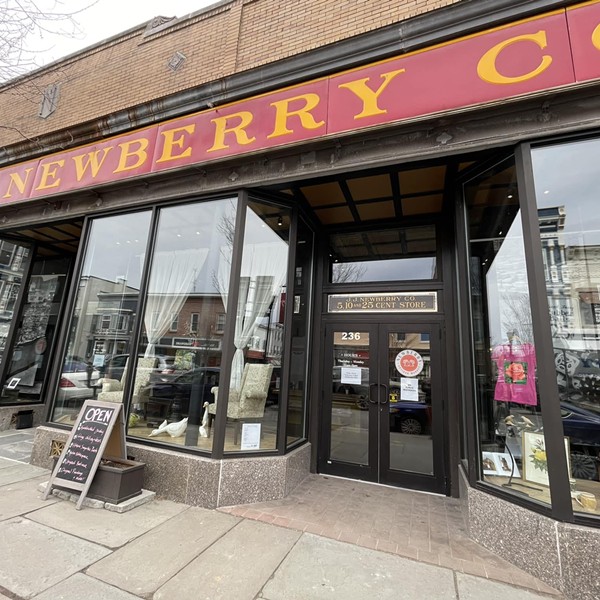Examples of street art by Unit, Dwell and Mr. Prvrt: A portrait on the back of a delivery van, stenciled commentary over a Banana Republic ad, and a decorated wall.
They wait for a train to pass and then climb up on the railroad bed, trying to stay out of the headlights of passing cars. The wallpaper paste is in a nondescript file box, the spray paint in a camera case. The tall weeds alongside the tracks sparkle with fireflies, and the only sounds are crickets, the occasional passing car, and the crunch of gravel as they trudge forward. They get to a yard, well known among aerosol artists in Albany—the highway overpass that connects Henry Johnson Boulevard to Route 90. The crew sets up shop at the base of the cement pillars, the sounds of the traffic high overhead. They put up three urinal posters on each of the pillars, using a broom-size brush to secure them to the cement. They work methodically, lining up the tops and bottoms of the posters, and smoothing out the wrinkles. When they are finished, they take out black spray paint and sign their names: “Unit” and “Dwell.”
They are street artists, whose illicit artwork graces buildings, billboards, and street signs across the region. They intentionally paint on private property, and in so doing, challenge the concept of public art. Their posters and large, stencil-based drawings give citizens an alternative to the billboards, street signs, and old buildings that dominate everyday life. Their art—which ranges from large-scale portraits to witty caricatures to pointed or whimsical drawings—has the power to startle and delight. Their work gives those who see it a new view of their surroundings, a bit of visual amusement, and a break from conformity.
The pair closely guards their anonymity, refusing to connect their street identities to their real names. Since street art is regarded as vandalism by authorities, their activity is both subversive and risky. While most artists are looking to escape obscurity, Unit and Dwell seek to remain underground. Their aliases are central to their work, Dwell believes, because “the only way my message is going to get across is illegally.”
How long that anonymity will remain is hard to say, as Unit and Dwell deal with growing interest in their work by people in and around the art world, and increasing opportunities for mainstream acclaim. Their most recent lawful opportunity has come in the form of a mural on the wall of the Spectrum 8 Theatre in Albany. It’s the largest project they’ve ever tackled, 25 by 100 feet, and they’re planning on covering the wall with what they’re calling a “post-futuristic freak show.” Dwell and Unit will work with a third partner, Mr. Prvrt. August.
The mural is scheduled to be completed in August, and in early June, Unit and Dwell were doing test runs with their stencils and automotive spray paint. They make the stencils by downloading pictures and Photoshopping them to create color separations. They use the separations in layers, the way printers register color plates, spray-painting one on top of the other. Often their work appears on stickers, posters, and panels they post around the area. Sometimes, as with the Spectrum mural, they paint directly on the walls.
The three artists, who are in their 20s and early-30s, have been working together since 2006. Before they met, they had seen each other’s handiwork on the streets. “They thought I was, like, 10 people,” Mr. Prvrt recalls, “and I thought they were five.”
Mr. Prvrt has the most formal training of the group, in illustration and printmaking, and the most experience exhibiting in legitimate settings. From the beginning, however, he also chose to put his work up anonymously around town, first his prints, and, once he began cutting stencils, his stickers and posters. “I didn’t want to have to wait for a show to have my work out there,” he says. He exhibited under both his real name and his street name for a while, but then moved primarily to “Prvrt.”
“When I wanted to show under my real name, I had to think, ‘What the hell do I have that I haven’t put up on the street?’ Eventually, the answer was, ‘Nothing.’”
Unit was an art student at a local college, but dropped out because the environment was too structured. Artificial boundaries and rules were being applied where they didn’t belong, she said. She worked with collage, and began to notice the work of Stain and Scout, local stencil artists. She saw a lot of similarities between collage and stencil, and admired the do-it-yourself approach to art. She cut her first stencil a few years ago, and, unwilling to wait for more formal invitations to exhibit, took to the streets.
















